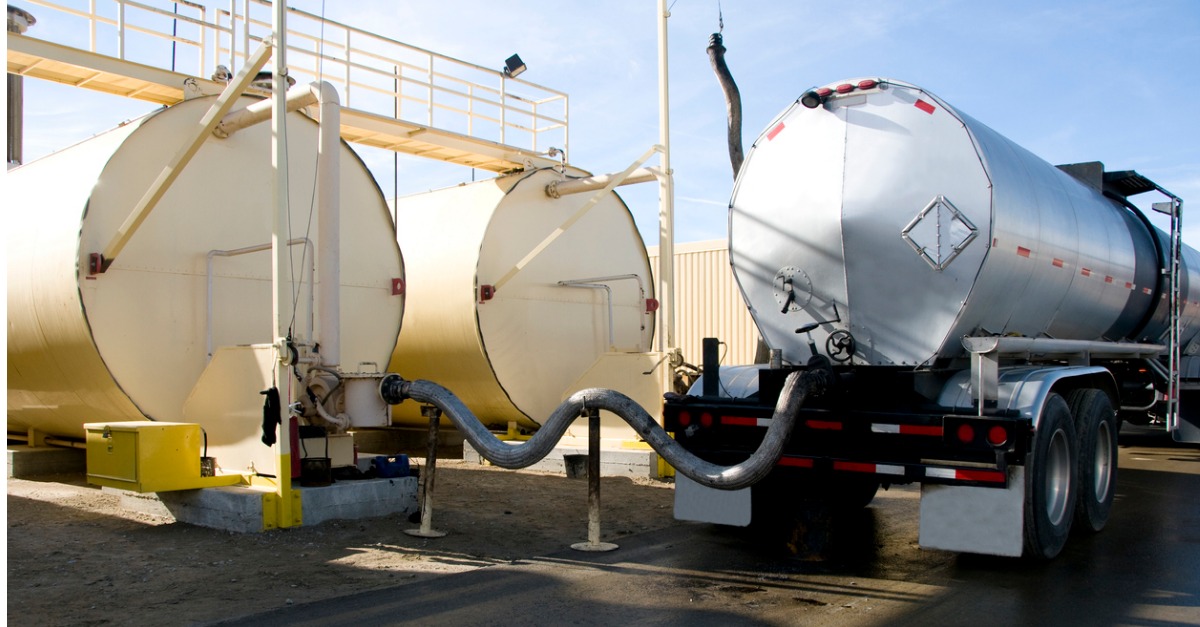
If you’re new to truck driving or still thinking about getting your CDL, you might be wondering what you’ll do during a typical day on the road.
Loading and unloading freight, including tanker trucks, can sometimes be a large part of the job. Below is some information you might find helpful if you’re considering getting a tanker truck or HazMat endorsement on your CDL.
When do drivers have to load freight?
Not all CDL drivers load or unload their own freight. Oftentimes you’ll arrive at the shipper’s location and wait for swampers or lumpers (freight handlers) to load pallets or skids onto your rig. This is called a Live Load. Waiting around for other people to load your trailer can be a bit boring and time consuming. Sometimes drivers use this time to have a meal, do a short workout, or even just socialize with other drivers or warehouse staff who aren’t actively working.
Another option if you’re not loading your own freight is Drop & Hook. This is exactly what it sounds like. You drop a sealed, full trailer in a lot or yard and pick up an empty. You’re in and out in no time.
But if you’ve got a tanker truck or are doing local deliveries rather than OTR, you’ll have to do the loading and unloading yourself.
Loading and Unloading Liquid Tankers
Tanker trucks offer a cost effective way to move bulk liquids. Often these are chemicals like fuel or crude oil, but sometimes you may haul milk or even grains in a tanker truck.
Below are some tips for loading and unloading tanker trucks. This is not a complete list, and the procedures will be different for different kinds of chemicals (solvents, diesel fuel, kerosene, vegetable oil, etc). But we want to give you a brief overview of what you can expect to do on a day when you’re loading or unloading liquid chemicals. Whether you’re top loading or bottom loading, you’ll want to keep these in mind.
1. Safety First
There are many safety precautions you have to take before loading or unloading a tanker truck with liquid. Chocking the wheels, performing a safety inspection, etc. One very important step is to put on your personal protection equipment (PPE). Your PPE will include eye protection, a long-sleeved shirt, gloves, full-length pants, safety shoes, and possibly other items.
2. Check Labels
Ensure that the product that you’re going to load into the tanker (or unload into a storage tank) is correct as marked on both the storage tank and the tanker truck. And if the liquid you’re going to be hauling requires any labeling, make sure that those labels are visible and accurate. If you load the wrong chemical into the tank, there can be dangerous consequences for you and everyone at the loading station.
3. Stay Close
After you’ve parked your rig and started the actual loading of the liquid, it’s important to stay close to the truck while loading and keep your full attention on the loading or unloading process. Avoid all distractions. It is your responsibility to make sure everything goes smoothly during the process. If you see an issue, stop immediately to address it.
4. Paperwork
Paperwork is a surprisingly large part of what a semi-truck driver does on a daily basis. Filling out the required fields in all of the paperwork is always important, but when you are responsible for tanker loading and unloading, the admin stuff is particularly critical. Complete your paperwork as much as possible before loading or unloading. And when you’re done, double check it before handing it off or driving away.
The loading and unloading of liquid tanker trucks is fairly simple. The safety precautions are straightforward, and the processes themselves are uncomplicated. Once you’ve gained some experience with verifying labels on tanks, operating the flow control valves, reading flow meters and flow rates, using loading and unloading systems, compressor hoses, blowers, and manhole covers, you’ll be an expert in no time.
Loading and unloading bulk liquids can be time-consuming. So make sure you’re staying within your time limits for Hours of Service. Just because you’re not driving doesn’t mean you’re not working, and all of those hours add up and affect your HoS time limits.
Get in the Driver's Seat - Download TF1 Now!
With over 100,000 CDL jobs available annually, TransForce Group is the #1 choice for drivers. Create your profile now to start receiving alerts for jobs that match your personal and professional goals.

